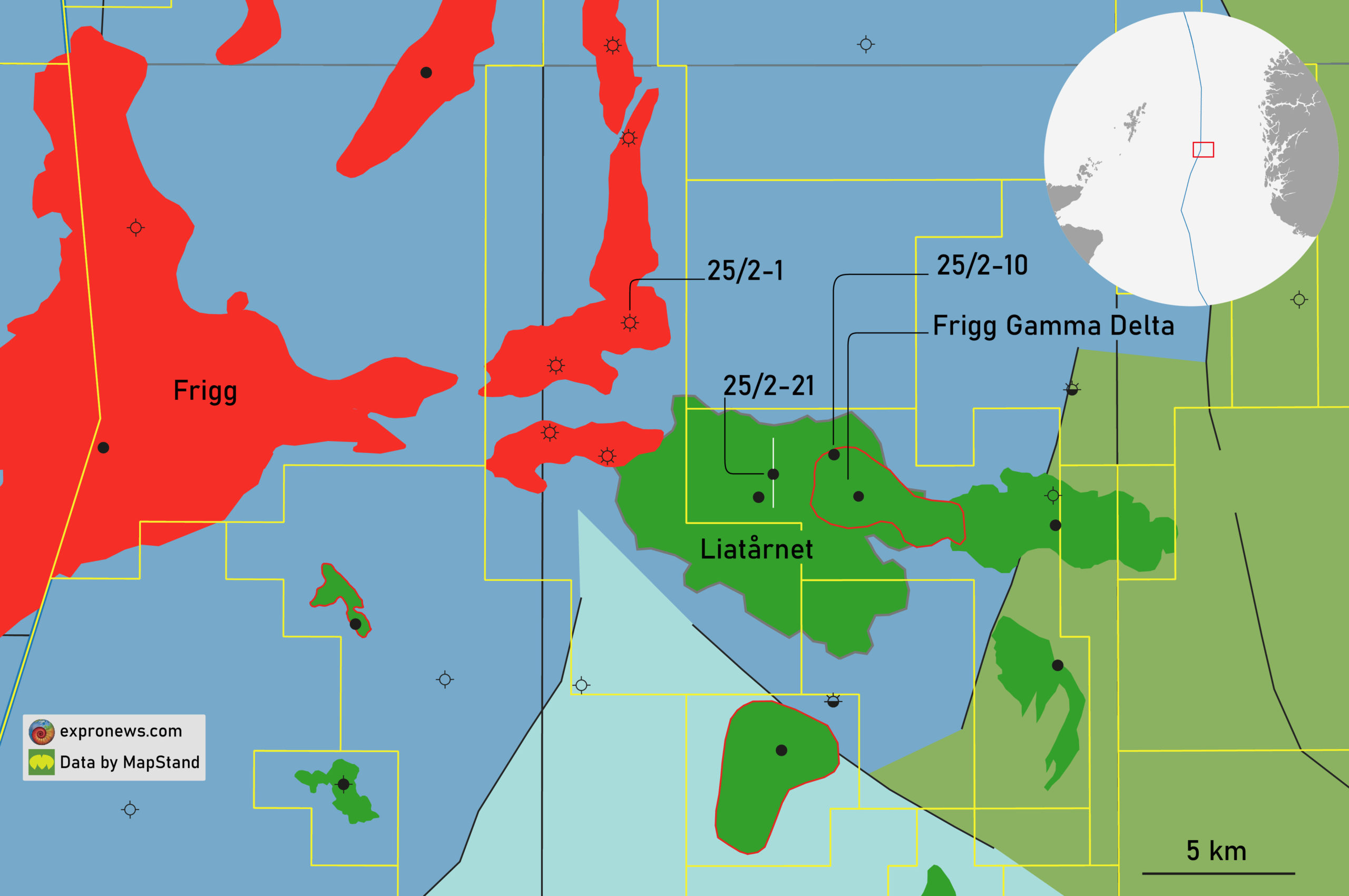Whilst drilling for additional Frigg satellite accumulations (Frigg GammaDelta) in 1986, well 25/2-10 hit an oil and gas bearing sandstone at around 1000 m. This was much shallower than the target Eocene Frigg sand at 2000 m. It turned out to be the first proof of what later would become the Liatårnet discovery in Skade Fm sandstones. Because no oil was brought to surface at the time, there was no immediate incentive to further investigate the shallow find.
The Skade Formation sandstones form part of a complex of delta lobe sands derived from the East Shetland Platform in the UK sector in the west. Interpreted as turbiditic in nature by Eidvin et al. (2014), the Lower Miocene sands overly Oligocene mudstones in the east and sandstones in the west. Separated by the Middle Miocene unconformity, overlying the Skade Fm are sands of the Utsira Fm, again sourced from the UK and subsequent Pliocene deltaic sands.
However, as more wells in the area were drilled over time, more evidence of oil in the same Skade Fm sandstones was found, suggesting that these were all part of the same accumulation.
Listen to Erling Rykkelid from AkerBP who will present about Liatårnet at the NCS Exploration – Recent Advances in Exploration Technology, May 19-20.
Liatårnet, a particular discovery in multiple ways
There are a few particularities to Liatårnet. One of those particular aspects is the fact that updip of the accumulation, the same Skade Fm sandstones turned out to be dry. An example of such a dry Skade Fm well is 25/2-1, about 3 km away. The second unique aspect to Liatårnet is the fact that a continuous fine-grained sealing unit is lacking, requiring another mechanism to ensure effective trapping.

The team at Aker BP has started an extensive campaign to further understand the mechanism that causes the trapping of oil and gas in Liatårnet. One hypothesis is that a cemented sandstone found on top of the Skade sands in most wells forms an effective barrier to oil migration (see this expronews article). Other possible explanations for the oil to be prevented from migrating further updip is a hydrodynamic component, the presence of a tar mat or oil being to viscous.
Last year, the company drilled 25/2-21 and cut a core from the Skade sandstones, again confirming the oil-bearing nature of the reservoirs. In addition, cuttings from the cemented sands were analysed for fluid inclusions and isotopes. One of the outcomes is that there seems to be a link between the isotopic signature of the calcite cement and the oil, suggestion a relationship between biodegradation and cementation.
This year, Aker BP is aiming to drill another well in Liatårnet with the aim to take downhole fluid samples and core the cemented sand, such that a more analysis can be done on it to further understand this 600-800 MMboe accumulation.
If Liatårnet appraisal is successful, it will be developed as part of the planned BP/Equinor NOAKA cluster. NOAKA stands for North of Alvheim, Krafla and Askja but it also includes Fulla. First proposed in 2018, it will include a number of discoveries east of Frigg but the absence of a large core field has so far delayed progress. Hopefully the go-ahead will be given soon.
HENK KOMBRINK





